The use of transformers in power supplies
 Different parts of electrical appliances, as a rule, need a different voltage supply. In order to ensure this, transformers with several secondary windings issuing different voltages are used in the power supply units of these devices, or several separate transformers are used, each of which provides its own specific voltage.
Different parts of electrical appliances, as a rule, need a different voltage supply. In order to ensure this, transformers with several secondary windings issuing different voltages are used in the power supply units of these devices, or several separate transformers are used, each of which provides its own specific voltage.
So, for example, in old televisions (with CRT tubes), 5-7 volts for powering transistors, microcircuits, or lamps were obtained from one transformer, and several kilovolts for powering the picture tube anode - from another - a high-voltage, so-called horizontal transformer. This transformer further fed the voltage multiplier, which several times increased the high voltage received from the secondary winding of the line generator. In the old days, when pulsed semiconductor technology was not ...
Vacuum devices yesterday and today
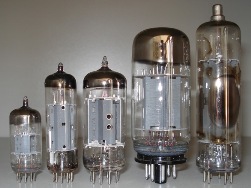 In the age of integrated circuits and smartphones, chips and supercomputers, it would seem ridiculous to think about electro-vacuum devices, such as electronic radio tubes. Everywhere they were replaced by transistors, and they had a place in the museum for a long time. Of course, there is some truth in these statements, nowadays the lamps are really not as widely used as before, nevertheless, to this day there remain areas in which they are indispensable and very popular.
In the age of integrated circuits and smartphones, chips and supercomputers, it would seem ridiculous to think about electro-vacuum devices, such as electronic radio tubes. Everywhere they were replaced by transistors, and they had a place in the museum for a long time. Of course, there is some truth in these statements, nowadays the lamps are really not as widely used as before, nevertheless, to this day there remain areas in which they are indispensable and very popular.
Indeed, the principle of operation of the kenotron, triode, and other electrovacuum devices is not so complicated. Between the electrodes inside the evacuated housing, an electron flow is initiated. The intensity and direction of this electron flow can be controlled using an electric or magnetic field. Electric current in a vacuum is striking in its properties: a lamp can generate oscillations in the widest frequency range, from sound to radio waves ...
What is the connection between the wire sections and the rabbit population?
 In 1202, the Italian mathematician Leonardo Fibonacci published his work under the title “Book of Abacus” (“Book of Calculations”), in which he also described number series immortalized by his name. In one of the chapters, Fibonacci tries to mathematically show how the number of rabbits will increase. He considered the following hypotheses as conditions: for the first two months a pair of rabbits does not produce offspring, starting from the third month a pair of rabbits gives another pair of rabbits.
In 1202, the Italian mathematician Leonardo Fibonacci published his work under the title “Book of Abacus” (“Book of Calculations”), in which he also described number series immortalized by his name. In one of the chapters, Fibonacci tries to mathematically show how the number of rabbits will increase. He considered the following hypotheses as conditions: for the first two months a pair of rabbits does not produce offspring, starting from the third month a pair of rabbits gives another pair of rabbits.
As a result of constructing a pattern of growth of the rabbit population, we obtain the following series of numbers, noting the increase in the number of rabbits every month: 1, 1, 2, 3, 5, 8, 13, 21, 34, 55, 89, 144 ... 1 + 1 = 2; 1 + 2 = 3; 2 + 3 = 5; 3 + 5 = 8 ...If you carefully look at the bump, you will see that its surface consists of scales that are twisted in a spiral in accordance with the Fibonacci sequence. While in a pineapple or in a flower of a sunflower, they are visible to the naked eye ...
Thunderstorm and lightning: what you need to know about it
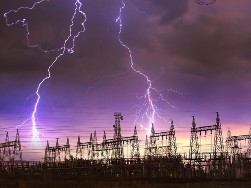 For an inexperienced layman who was fortunate enough to never be struck by lightning in his life, a thunderstorm appears to be just a flash of light and peals of thunder. In fact, lightning is a rather complex natural phenomenon.
For an inexperienced layman who was fortunate enough to never be struck by lightning in his life, a thunderstorm appears to be just a flash of light and peals of thunder. In fact, lightning is a rather complex natural phenomenon.
At first, from the cloud, the “leader” is rapidly falling, as it were, to the ground. The leader is the starting part of the lightning discharge. Having walked about a hundred meters, the leader slows down to accumulate energy, gain a charge, then he moves further, turns away from space with air of greater resistance - where there is less resistance, passes the next stages, and in the end goes the whole way, which can reach tens of kilometers .Moving closer to the ground, and already at a distance of several tens of meters from its surface, the leader causes an oncoming (induced) electric discharge of the opposite sign ...
The unusual story of a conventional circuit breaker
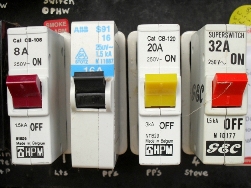 The circuit breaker is so familiar to us that it seems that there is nothing interesting in it. But before the switch found its modern look and settled in every home, in offices, schools, shopping centers and enterprises, it went through a long evolution.
The circuit breaker is so familiar to us that it seems that there is nothing interesting in it. But before the switch found its modern look and settled in every home, in offices, schools, shopping centers and enterprises, it went through a long evolution.
The first line circuit breaker was invented by the American Charles Grafton Page. In 1838, he created a breaker - in fact, a mercury tank with a contact rod. As the current increased, an electromagnetic field appeared, causing the rod to rise from the mercury. The circuit opened, and when the magnetic field disappeared, all the elements returned to their places. Later prototypes of fuses appeared. Their device was patented by Thomas Edison in 1880: a fusible insert made of foil or wire was placed in a glass flask. Outwardly, the fuse resembled a familiar light bulb, but with seeming primitiveness, it provided a network break ...
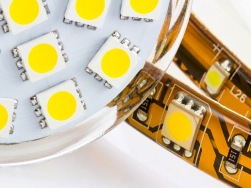 Already in 2007, in one of the reports at the Beijing conference of the International Commission on Lighting, the importance of economy and environmental friendliness of both already used and still being developed, more advanced lighting products was emphasized.
Already in 2007, in one of the reports at the Beijing conference of the International Commission on Lighting, the importance of economy and environmental friendliness of both already used and still being developed, more advanced lighting products was emphasized.
The primary accent was made by the speakers on a more rational and efficient use of light. And this was not at all a call to somehow reduce the illumination. One of the most important steps towards this goal is the development and implementation of energy-efficient and more environmentally friendly light sources - LEDs. LEDs are semiconductor electrical products designed to receive light due to the electric current passing through the pn junction. But not every pn junction emits light. To receive light from a semiconductor, it is necessary ...
Three curious facts about electrical engineering
 Any activity requires constant development, and wiring is no exception. It is important to constantly expand our professional horizons, especially regarding the equipment and materials used. We offer several facts about electrical engineering that will make any specialist think.
Any activity requires constant development, and wiring is no exception. It is important to constantly expand our professional horizons, especially regarding the equipment and materials used. We offer several facts about electrical engineering that will make any specialist think.
According to the Electrocable Association, every eleventh product on the low-voltage equipment market is fake. They copy everything, but the saddest thing is with cable and wire products (CAT) and circuit breakers. When choosing this equipment you need to be especially careful. So, in counterfeit cables, the cross section of copper conductors is underestimated, the content of copper can be significantly reduced in obviously poor-quality products. In order to choose the right cable of the desired cross section, you need to take into account the rated current and power of the devices ...
The use of electrostatic induction in technology
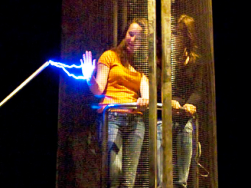 With electrostatic induction, an electric charge appears on the surface of a conductor introduced into an external electrostatic field. This charge, which accumulates on the surface of said conductor, is called an induced or induced charge. Moreover, on the opposite sides of such a conductor, the induced charges will be of the opposite sign - on the one hand there will be positive, on the other - negative.
With electrostatic induction, an electric charge appears on the surface of a conductor introduced into an external electrostatic field. This charge, which accumulates on the surface of said conductor, is called an induced or induced charge. Moreover, on the opposite sides of such a conductor, the induced charges will be of the opposite sign - on the one hand there will be positive, on the other - negative.
The accumulation of charge on the surface of the body during electrostatic induction will occur until the intrinsic electrostatic field of this body almost completely compensates for the external electrostatic field in which this body is placed.This happens with bodies with high conductivity, that is, with metals characterized by low resistivity. The phenomenon of electrostatic induction finds application in the technique of ...
